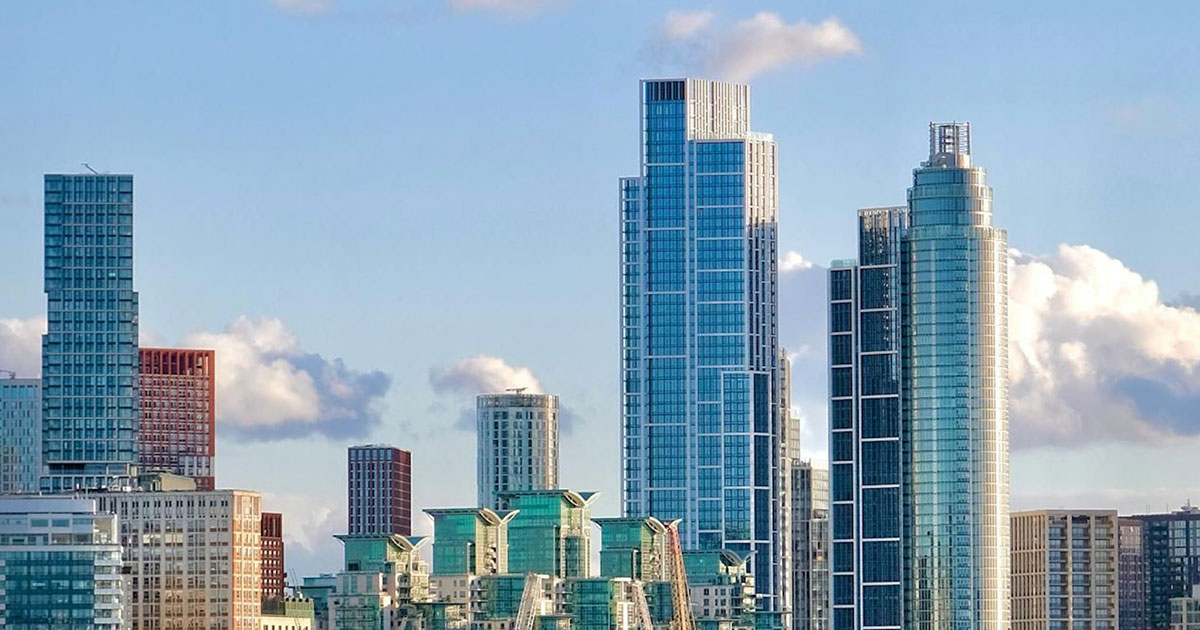The Gateway Regime

The introduction of the ‘Gateway Regime’ was one of the major building safety reforms arising from the Building Safety Act 2022 (BSA).
The Gateway Regime is a series of additional safety requirements (known as ‘gateways’) to be complied with at three major stages of the design and construction of a higher risk building (HRB) (i.e. those buildings that are at least 18m or seven storeys high which comprise at least two residential units or is a care home or hospital). Each gateway requires either consultation with, or formal sign off from, the Building Safety Regulator (BSR) before the next stage of the development can proceed. The BSR is the new building control authority for all HRBs in England.
Note: The Gateway Regime also applies to refurbishments of existing HRBs and other projects involving works on or conversions of buildings into HRBs. This note is intended to provide a brief overview of each stage of the Gateway Regime and how it will impact the life cycle of your HRB
Gateway 1: Planning and design phase – the fire safety statement
The first gateway is to ensure that fire safety matters in connection to the building have been considered at the planning stage. It has been a requirement for developers since August 2021 to submit a fire safety statement to the Local Planning Authority (LPA) alongside all planning applications for HRBs detailing the site layout, how fire safety will be managed in the building and how the emergency services can access the building among other matters.
The LPA will review the fire safety statement and will consult with the BSR before deciding whether or not to grant planning permission for a HRB. The LPA has the power to refuse planning applications where they consider the safety provisions contained within to be inadequate. An additional consideration to bear in mind for projects in London is that all major planning applications which require Stage 2 approval by the Mayor of London and relate to residential buildings over 30 metres must be designed to provide for a second staircase.
The Government has also recently announced that, from 30 September 2026, all new residential buildings in England above 18 metres must have a second staircase. Projects where a building notice has been given, or a building control approval application made, to the relevant authority before 30 September 2026 do not need to comply with the requirement for a second staircase provided that the building work has started and is “sufficiently progressed” by 30 September 2026. Compliance with the new rules around second staircases in England will be checked at Gateway 1. For more information on how this will impact your development please speak to our BSA team.
Gateway 2: Pre-construction phase
The second gateway is to ensure that building regulation requirements will be complied with and that building safety is considered during the whole construction phase.
The developer is required to submit to the BSR a building control application which demonstrates how the proposed construction works will comply with all applicable requirements of the building regulations. This is separate to the planning application process in Gateway 1 above and works of construction are not permitted to begin until the BSR has approved the application. The BSR has 12 weeks (8 weeks where works are to an existing HRB) or longer (if agreed) to either approve or reject the building control application.
While the statutory obligation to submit the building control application is on the developer, it is open for the developer and the contractor to allocate contractually responsible for Gateway 2 (and each of the gateways) and we can help you with the contractual negotiations in your sale contracts or forward funding agreements to achieve your desired outcome. We can also assist you in ensuring that key events in the approval process under Gateway 2 are accounted for in the contractual documents with sufficient time allowed for delays.
If the building control application has been approved by the BSR under Gateway 2, further points that could impact timing are:
- the developer is to notify the BSR at least 5 days before ‘starting’ the works;
- the developer is to further notify the BSR within 5 days of the work having commenced;
- ‘major changes’ to the construction of the HRB require BSR approval which can take up to 4-6 weeks to either approve or reject. While the ‘major change’ is being considered no work can take place on any area subject to a ‘major change’. A major change is one that has a significant impact on the design or fire strategy of the HRB; and
- ‘notifiable changes’ need to be referred to the BSR prior to implementation although these works will be able to proceed unless there is an objection within 14 days.
Gateway 3: Post-construction phase
The final gateway is to ensure that the building is safe for occupation. Gateway 3 requires the developer to submit a completion certificate application (or a partial completion certificate application if there is to be a sectional completion) to the BSR once the works have been completed and before the building is occupied. There is also a requirement to provide the BSR with 2 weeks’ advance warning before submitting this application so that they have sufficient time to manage workload.
The application will include handing over the ‘golden thread’ of information which includes as-built plans, documents demonstrating that the requirements of the building regulations have been met and signed declarations from the principal contractor and principal designer that the works and building comply with the building regulations. The BSR has 8 weeks to determine the application and an inspection will be carried out before deciding whether to issue a completion certificate.
If a completion certificate application is approved the legal owner of the building has to apply separately to register the building as a HRB with the BSR (automatic registration does not occur when a completion certificate is issued). It is possible to achieve partial approval of Gateway 3 with several parts of the building or development being able to commence occupation before others.
Residential parts of the HRB cannot be occupied before a completion certificate has been granted for the building and the building has been registered. It is a criminal offence to do so.
Conclusion
The new BSA regime is complex and carries serious consequences if breached. For more detailed advice on any of the points covered in this note please speak to member of the Forsters Building Safety Act Team who will be happy to provide further information and assistance. This note reflects the law as at April 2024.






